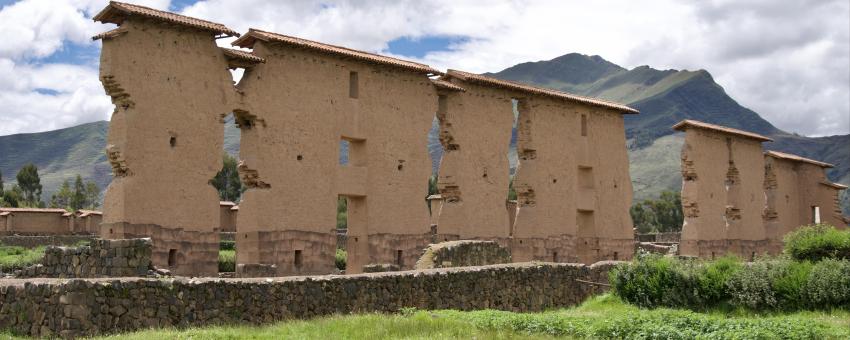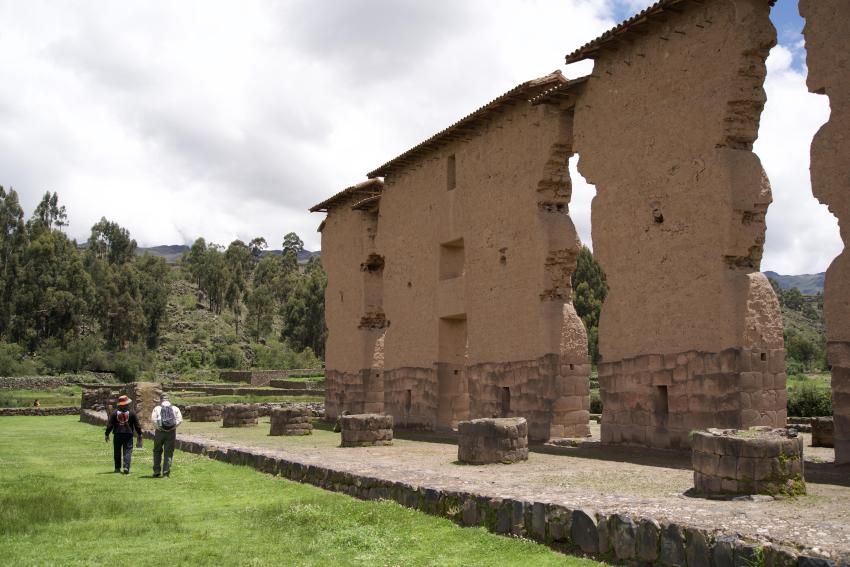Raqchi Inca Ruins
Inca Wiracocha’s city

The name means “baked clay” in Quechua, a reference to the ceramics that Raqchi residents were known for. The village with the same name as the Inca ruins is still famous for quality ceramics.
Though it was certainly a pre-Inca settlement, construction during the Incario likely started in the late 1300s under the Inca Wiracocha. It was finished by the Inca Pachacutec and Inca Tupac Yupanqui in the late 1400s.
Remarkably, the central adobe wall that used to be inside a massive temple building is mostly intact. For adobe to last over 600 years, it had a very special recipe. Rather than mixing the clay with straw, as most adobe was built, this wall was built with clay, cactus juice, and llama fur, among other ingredients.

Around the site
Besides this main attraction, there is a whole city with homes and agricultural areas nearby. It’s worth spending an hour or two exploring; if you don’t already have a guide, hire one at the entrance. With no signs to explain what you’re looking at, a local guide makes all the difference.